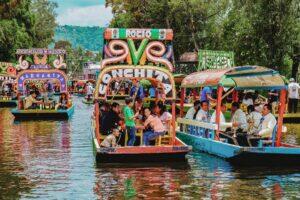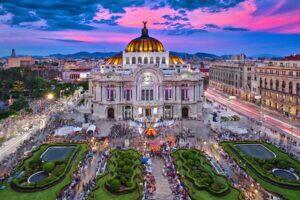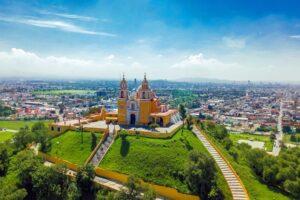Fodor's Expert Review Museo Casa Estudio Diego Rivera y Frida Kahlo
San Angel
Fodor's Choice
This small museum compound is where Diego and Frida lived, painted, loved, and fought (they divorced briefly in 1939) from 1934 to 1940; its three angular red and blue buildings with large multipane windows and a cacti-filled courtyard is stylistically the antithesis of the traditional Spanish Colonial Museo Frida Kahlo just a few miles away in Coyoacán. In the red main house, some of Rivera's final paintings rest on easels, and you can see his denim jacket and shoes on a wicker chair with his modest little bed and side table made up as though the artist might return at any moment. In the building's studio you can view giant papier-mâché sculptures (some of the pre-Hispanic pottery that Rivera collected) and other curious figurines and colorful folk art. The buildings' unusual, and at the time highly avant garde, design are a big part of what makes a visit here so interesting. Architect Juan O'Gorman, who devised these buildings in 1931, was a close friend of Rivera's and lived on the...
READ MORE
This small museum compound is where Diego and Frida lived, painted, loved, and fought (they divorced briefly in 1939) from 1934 to 1940; its three angular red and blue buildings with large multipane windows and a cacti-filled courtyard is stylistically the antithesis of the traditional Spanish Colonial Museo Frida Kahlo just a few miles away in Coyoacán. In the red main house, some of Rivera's final paintings rest on easels, and you can see his denim jacket and shoes on a wicker chair with his modest little bed and side table made up as though the artist might return at any moment. In the building's studio you can view giant papier-mâché sculptures (some of the pre-Hispanic pottery that Rivera collected) and other curious figurines and colorful folk art. The buildings' unusual, and at the time highly avant garde, design are a big part of what makes a visit here so interesting. Architect Juan O'Gorman, who devised these buildings in 1931, was a close friend of Rivera's and lived on the property in a third structure that today, like the blue house that Frida resided in, contains rotating exhibits.
Interesting architectural features include several curving concrete exterior and interior staircases, and a bridge that connects the rooftops of Diego's and Frida's homes—a convenient passageway that allowed the two simultaneous access to and space from one another.
READ LESS








